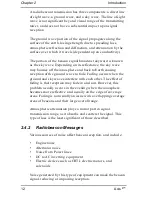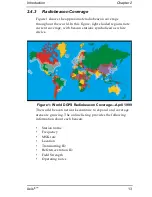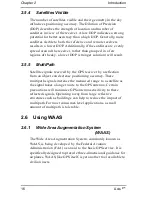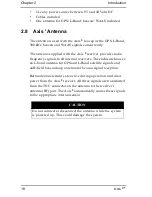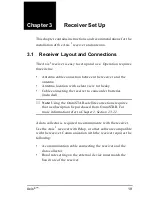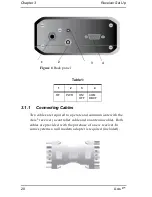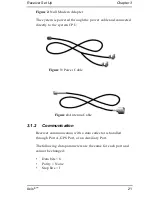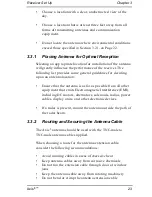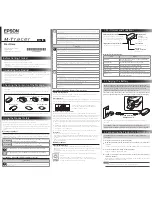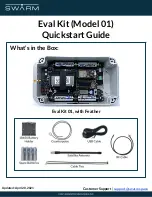
Introduction
Chapter 2
Axis
3™
11
*
Note:
Please see the service contract included with the Axis
3
receiver system.
2.4
Radio Beacon Service
The Axis
3
receiver is able to use differential corrections
received through the internal beacon receiver, operating
seamlessly with DGPS beacon networks throughout the world.
The receiver uses signals from the United States Coast Guard
(USCG), Canadian and all International Association of
Lighthouse Authorities (IALA) stations to provide free
differential corrections.
*
Note:
The Axis
3
default operation mode is beacon.
2.4.1
Radiobeacon Range
The broadcasting range of a 300 kHz beacon is dependent upon
a number of factors including transmission power, free space
loss, ionospheric state, surface conductivity, ambient noise, and
atmospheric losses.
The strength of a signal decreases with distance from the
transmitting station, due in large part to spreading loss. This
loss is a result of the signal’s power being distributed over an
increasing surface area as the signal radiates away from the
transmitting antenna.
The expected range of a broadcast also depends upon the
conductivity of the surface over which it travels. A signal will
propagate further over a surface with high conductivity than
over a surface with low conductivity. Lower conductivity
surfaces such as dry, infertile soil, absorb the power of the
transmission more than higher conductivity surfaces, such as
sea water or arable land.
Summary of Contents for Axis 3
Page 1: ... Axis 3 TM Operations Manual Part Number 750 1 0060 Rev 2 GPS Receiver System ...
Page 6: ......
Page 10: ......
Page 11: ...Welcome Chapter 1 Axis 3 5 ...
Page 33: ......
Page 41: ......
Page 43: ......
Page 48: ......
Page 51: ...43 Axis 3 Appendix C Frequently Asked Questions ...
Page 53: ......
















